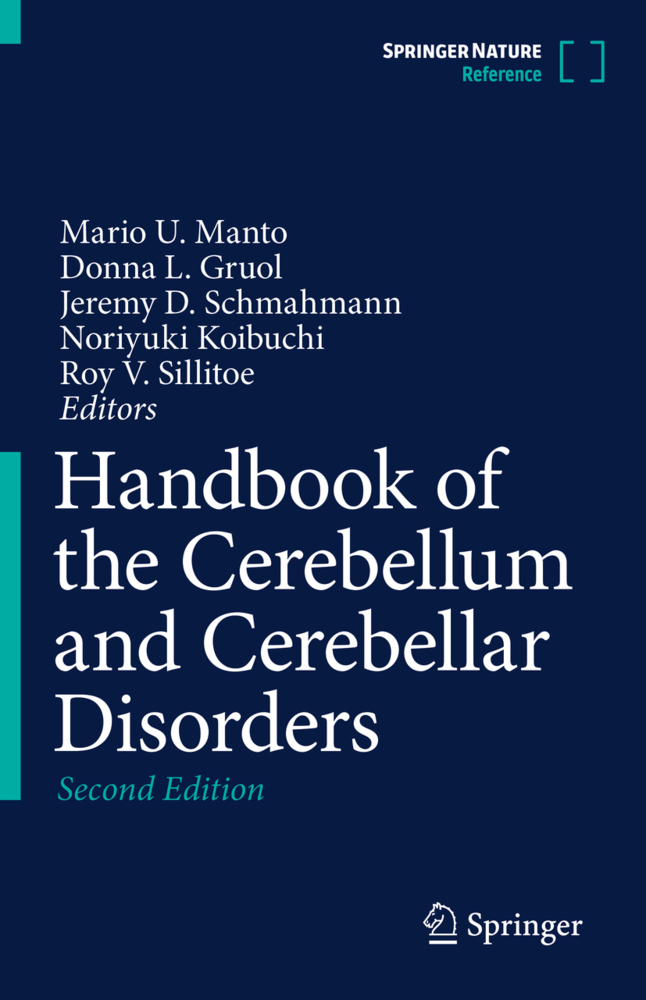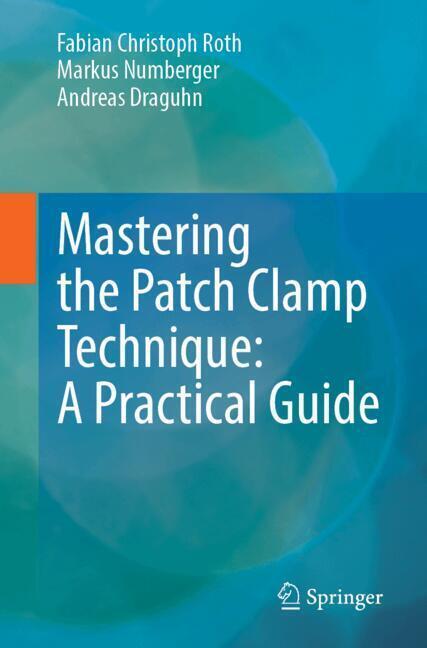Handbook of the Cerebellum and Cerebellar Disorders, 4 Teile
Handbook of the Cerebellum and Cerebellar Disorders, 4 Teile
Our knowledge of cerebellar functions and cerebellar disorders, called ataxias, is increasing considerably. Studies of the cerebellum are now a central focus in neuroscience. During the last four decades, many laboratories worldwide have dedicated their research activities to understanding the roles of the cerebellum in motor control, cognitive processes and biology of mental processes, behavioral symptoms, and emotion. It is now accepted that the cerebellum acts as a cognitive operator in learning, perception, and attention. Moreover, major improvements in our assessment of in vivo cerebellar architecture using imaging techniques have occurred. A typical example is the accurate description of cerebellar anatomy during fetal development with MRI, a progress which has direct impacts on patient care. These advances have been associated with discoveries of new clinical disorders, in particular in the field of genetic ataxias. More than 20 new genes have been identified these last 10 years. Only for dominant ataxias, more than 30 diseases have now been unravelled. The number of ataxic disorders will increase with aging, the cerebellum being the structure of the brain with the most important loss of neurons with age. More than 300 different cerebellar disorders are encountered during daily practice, but we are missing a single source of information explaining their pathogenesis. Despite the immense amount of knowledge acquired about the cerebellar circuitry these last years, a large book covering the neuroscience of the cerebellum is missing. The goal of this endeavour is to bring up to date information relevant for basic science and also for clinical activities. To reach this goal, the most renowned authors are gathered in a unique and in-depth book with a format of a handbook. We emphasize the connections between molecular findings, imaging features, behavioural/neuropsychological aspects, and clinical implications.
Chapter 3. Neuroimaging of the cerebellum
Chapter 4. Neurotransmitters and neuromodulators
Chapter 5. Fructose metabolism and the cerebellum
Chapter 6. Physiology of the cerebellum
Chapter 7. Cerebellum and pain processing
Chapter 8. Computational models of cerebellar function
Chapter 9. Animal models of cerebellar ataxias
Chapter 10. Symptoms of cerebellar disorders in human
Chapter 11. Clinical deficits
Chapter 12. Cerebellum and cognitive processes
Chapter 13. Cerebellum and emotion regulation
Chapter 14. Developmental disorders
Chapter 15. Autism spectrum disorders and ataxia
Chapter 16. Cerebellum and schizophrenia
Chapter 17. Progressive myoclonic epilepsies
Chapter 18. Cerebellar stroke
Chapter 19. Immune diseases
Chapter 20. Endocrine disorders
Chapter 21. Infectious diseases
Chapter 22. Tumors and paraneoplastic disorders
Chapter 23. Trauma of the posterior fossa
Chapter 24. Cerebellotoxic agents
Chapter 25. Multiple system atrophy (MSA)
Chapter 26. Essential tremor
Chapter 27. Autosomal Recessive Cerebellar Ataxias (ARCAs)
Chapter 28. Mitochondrial disorders
Chapter 29. X-linked ataxias
Chapter 30. Dominant ataxias
Chapter 31. Overview of the differential diagnosis of cerebellar disorders
Chapter 32. Overview of the general management of cerebellar disorders.
Chapter 1. Embryology
Chapter 2. AnatomyChapter 3. Neuroimaging of the cerebellum
Chapter 4. Neurotransmitters and neuromodulators
Chapter 5. Fructose metabolism and the cerebellum
Chapter 6. Physiology of the cerebellum
Chapter 7. Cerebellum and pain processing
Chapter 8. Computational models of cerebellar function
Chapter 9. Animal models of cerebellar ataxias
Chapter 10. Symptoms of cerebellar disorders in human
Chapter 11. Clinical deficits
Chapter 12. Cerebellum and cognitive processes
Chapter 13. Cerebellum and emotion regulation
Chapter 14. Developmental disorders
Chapter 15. Autism spectrum disorders and ataxia
Chapter 16. Cerebellum and schizophrenia
Chapter 17. Progressive myoclonic epilepsies
Chapter 18. Cerebellar stroke
Chapter 19. Immune diseases
Chapter 20. Endocrine disorders
Chapter 21. Infectious diseases
Chapter 22. Tumors and paraneoplastic disorders
Chapter 23. Trauma of the posterior fossa
Chapter 24. Cerebellotoxic agents
Chapter 25. Multiple system atrophy (MSA)
Chapter 26. Essential tremor
Chapter 27. Autosomal Recessive Cerebellar Ataxias (ARCAs)
Chapter 28. Mitochondrial disorders
Chapter 29. X-linked ataxias
Chapter 30. Dominant ataxias
Chapter 31. Overview of the differential diagnosis of cerebellar disorders
Chapter 32. Overview of the general management of cerebellar disorders.
Manto, Mario U.
Gruol, Donna L.
Schmahmann, Jeremy D.
Koibuchi, Noriyuki
Sillitoe, Roy V.
| ISBN | 978-3-030-23809-4 |
|---|---|
| Artikelnummer | 9783030238094 |
| Medientyp | Buch |
| Auflage | 2. Aufl. |
| Copyrightjahr | 2021 |
| Verlag | Springer, Berlin |
| Umfang | XLII, 2737 Seiten |
| Abbildungen | XLII, 2737 p. 512 illus., 321 illus. in color. In 4 volumes, not available separately. |
| Sprache | Englisch |










